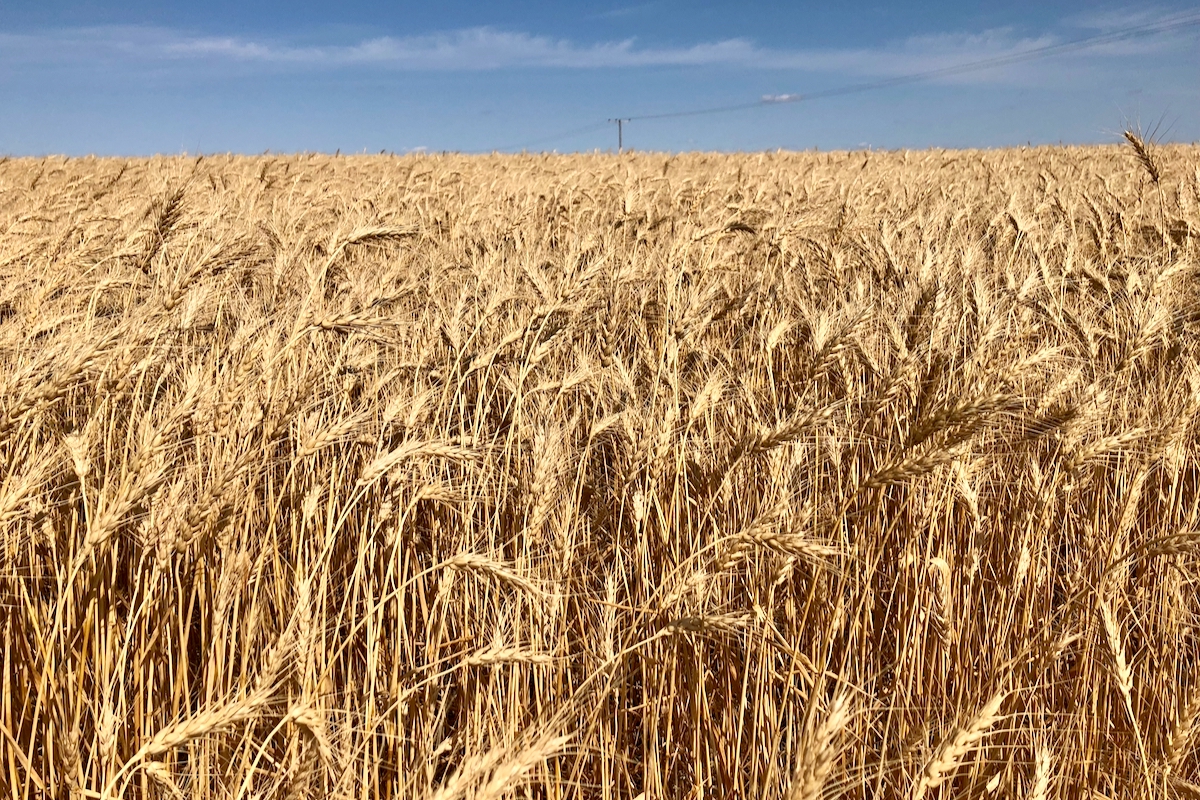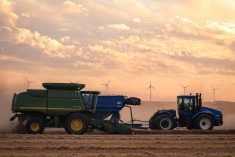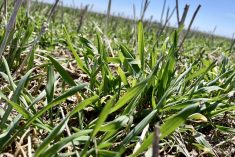SOUTHWEST
Seeding operations are now complete, and excess moisture has resulted in unseeded acres across the region.
Most areas reported 25 millimetres, but Hamiota and northern parts of the south parkland region received 80 mm. Recently seeded fields have saturated soil and standing water.
Some fields are suffering from compaction and excess moisture, but crops are generally emerging well.
Weeds are rapidly growing, and many producers are seeing early disease issues in cereal crops and adding a fungicide with herbicide applications.
Flea beetle activity is declining, cutworm feeding is on the rise and producers are busy scouting.
Read Also

Record EU soft wheat harvest expected this year
This year’s European Union soft wheat crop is expected to have reached a record high.
The height of this year’s first cut on alfalfa is 75 percent of normal. Most dairy producers are putting up silage because of wet conditions. Dugouts are full with several overflowing.
NORTHWEST
Heavy rain showers ended seeding options, ranging from 25 to 75 mm. Some greenfeed acres may still be planted.
There’s standing water in low lying areas, and many localized crops are starting to yellow. Spraying progress was made.
Fields are generally showing good germination and even emergence. In-crop herbicide applications are being made as field conditions permit.
Many pastures and forage fields remain saturated, and little to no forage harvesting was done, although many are at the proper stage for cutting dairy-quality hay.
Dugouts are overflowing.
CENTRAL
Below normal temperatures and excess moisture put a halt to any remaining seeding and slowed crop development. Standing water in fields is common, and some acres have switched to greenfeed.
Nitrogen leaching, lack of oxygen in soils and iron chlorosis deficiency are being exhibited in fields.
Herbicide applications were almost completed and will resume as fields dry. Weeds are rapidly growing, and rutting is evident in the wettest fields. Many crops have had one to two applications. Fungicide applications will target leaf diseases, and timing for fusarium head blight will be a challenge.
Flea beetle activity is declining, and diamondback moth numbers are low. Some acres of corn, sunflowers and soybeans were sprayed for cutworms. High populations of grasshoppers in some areas have been reported, particularly along headlands and roadsides.
Most hay and pasture moisture conditions are adequate. Hay crops are ready for first cutting with alfalfa in late bud to early bloom stage, but wet weather has put haying activity on hold.
EASTERN
Precipitations varied from 25 to 30 mm. Some areas experienced hail ranging from nickel to golf ball size, and crop damage is still being assessed.
Standing water is evident in many fields. Cereals, canola and soybeans are beginning to show signs of stress, including crop yellowing. Below normal temperatures have also affected crop development.
Limited progress made with weed spraying, which is estimated at 60 percent complete. Fungicide applications will continue as fields dry out.
First cutting of alfalfa has begun for most dairy producers. Yields are reported to be average or above average.
INTERLAKE
Precipitation ranged from 20 to 50 mm with hail reported in some areas. Soil moisture conditions are generally oversaturated. Some established crops are starting to yellow. Herbicide spraying is sporadic because of frequent rainfall.
Winter wheat has started to head in some areas, and spraying for fusarium head blight will begin soon.
Alfalfa seed growers are spraying insecticides on fields before releasing leaf cutter bees in seven to 10 days if weather permits.
There are reports of damage caused by cutworms in soybeans, canola, corn and sunflower fields.
Haying has started with good yields and quality reported. Yields average 3.5 tons per acre for alfalfa and three tons per acre for alfalfa-grass mixtures.















